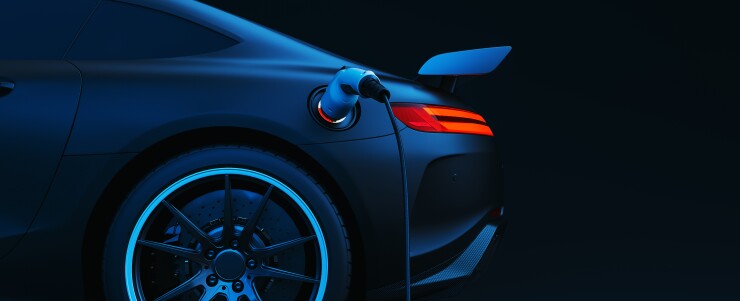Five years ago, I installed a Level 2 charger in my garage for my first electric vehicle (EV). I did everything by the book: I hired a licensed electrician, pulled the necessary permits, and made sure my panel could handle the load. Even still, I remember thinking, "What happens if something goes wrong?"
That question is no longer hypothetical for many homeowners and insurers. As EV adoption increases and residential charging becomes more normal,
The charging risk
EV fires, particularly those linked to charging, are still relatively uncommon.
EVs involved in thermal incidents are both difficult to handle and often total losses. That's a red flag for insurers, not because the probability of an EV fire is high, but because the consequences are severe, and the claims are complex.
Who pays when an EV charging fire happens?
Insurers face a tangled web of liability questions if an EV ignites while charging in a garage. Was the fire caused by the vehicle's battery, a faulty charger, substandard wiring, or improper installation? Multiple parties could be involved, including:
- Vehicle manufacturers, if the battery or onboard systems failed
- Charger manufacturers for defective equipment
- Electricians for improper installation or unpermitted work
- Homeowners for neglect or DIY setups that violate code
Depending on the findings, the loss could fall under homeowners insurance, auto insurance (via comprehensive coverage), or even trigger subrogation against a third party. Coordination with so many parties can often lead to delays, leaving policyholders wondering why their claim is taking longer than expected or why coverage is being disputed at all.
The role of clear communication—and smarter tools
I've worked in claims and technology for years and have seen firsthand how policyholder confusion can derail even the best-handled cases. That's why proactive education matters. Suppose homeowners understood, for example, that a Level 2 charger pulls 240 volts—similar to an electric dryer—and must be installed by a licensed electrician. In that case, they'd be far less likely to experience a loss and more prepared if one occurs.
Digital tools can support this education. Text messaging, personalized email campaigns, or interactive onboarding flows can walk policyholders through EV safety best practices. Insurers can embed prompts during policy renewal—"Did you recently install a charger? Have you updated your coverage?"—to stay ahead of risk.
Closing the knowledge gap between home and auto
The real challenge for insurers isn't just mitigating risk—it's clarifying coverage in a fast-evolving environment. EV ownership blurs the lines between property and auto. If a fire originates in a vehicle but damages the home, which policy kicks in? How are deductibles handled? What if liability is shared?
These aren't questions customers want answered after a loss; that's why integrating policyholder communication, simplifying intake, and creating better coordination between lines of business are crucial for efficient claims handling and fast resolution. Forward-thinking insurers use technology to connect the dots between auto and home, providing a more seamless experience during an already stressful event.
Educated policyholders are safer policyholders
EV fire risk is rising—and with it, the potential for high-cost, high-confusion claims. The good news? Carriers can manage most of this through prevention and education.
Don't wait for a fire to make this a priority. Carriers can start today by sharing charger installation guidance, clarifying how coverage applies to EVs, and using digital tools to reach customers in proactive, helpful ways.
Policyholders are already adapting to an electrified future. It's time for the insurance industry to do the same.






